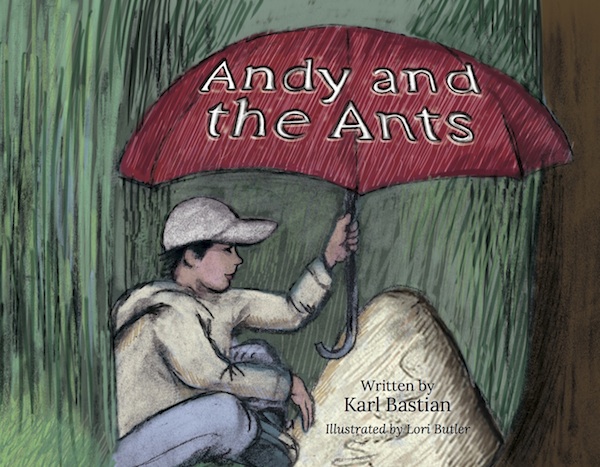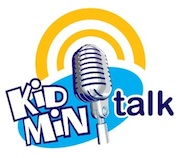Use All the Senses: Reach Every Kid, Every Way
Sight, sound, touch (and sometimes taste and smell!) — engaging more senses makes learning stick for every type of learner.
Have you ever walked into a room and instantly been transported by a smell? Maybe fresh cookies reminded you of Grandma’s house… or the scent of pine brought you back to Christmas morning. Smell is one of the most powerful and memorable senses we have. That’s why I love this verse:
“For we are to God the sweet aroma of Christ…”
2 Corinthians 2:15
What a vivid image — not just that we live for Christ, but that our very presence can carry the fragrance of Jesus into the world. It’s a sensory picture of spiritual truth.
That’s what we want in our teaching too — to leave a spiritual fragrance that lingers long after the lesson ends. And one of the best ways to do that is to engage all five senses in our teaching. When kids see, hear, touch, taste, and maybe even smell the truth you’re teaching, it sticks. It moves from their heads to their hearts — and stays.
 Every child learns differently. Some children love to read and observe; others need to hear stories or music. And then there are those who learn best when they move, touch, taste, or even smell something. If we’re going to reach every kid, we need to teach in ways that speak to every learning style. It’s not enough to talk at kids — we have to invite them to experience the lesson through every sense God gave them.
Every child learns differently. Some children love to read and observe; others need to hear stories or music. And then there are those who learn best when they move, touch, taste, or even smell something. If we’re going to reach every kid, we need to teach in ways that speak to every learning style. It’s not enough to talk at kids — we have to invite them to experience the lesson through every sense God gave them.
The Bible says in Psalm 34:8,“Taste and see that the Lord is good.”
That’s more than poetic. It’s an invitation to experience God, not just hear about Him. God created us as multisensory beings, and the most memorable teaching moments are the ones that engage more than one sense.
 I often ask myself during lesson prep: “How can I help the kids see, hear, touch, taste, or smell the truth I want them to grasp?”
I often ask myself during lesson prep: “How can I help the kids see, hear, touch, taste, or smell the truth I want them to grasp?”
It might sound silly at first — but these added sensory elements can elevate your teaching in ways you never imagined.
For example, I once heard of a leader who hid fresh fish in their classroom while teaching about Jesus calling the fishermen to become fishers of men. Throughout the lesson, the kids kept whispering, “I smell fish!” The leader didn’t acknowledge it until the big reveal — and the kids lost their minds. It may have been the least-used of the five senses, but that smell burned the story into their memory.
 Once, when teaching about the resurrection, I played a scene from The Miracle Maker — but I muted the audio and instead played a powerful song, “This is Love” by Dino and the Dynamo. I asked the kids to simply watch and listen to the lyrics. Something shifted. Kids were silent. Many started to cry. They were seeing and hearing the crucifixion in a whole new way — and they felt it in their hearts.
Once, when teaching about the resurrection, I played a scene from The Miracle Maker — but I muted the audio and instead played a powerful song, “This is Love” by Dino and the Dynamo. I asked the kids to simply watch and listen to the lyrics. Something shifted. Kids were silent. Many started to cry. They were seeing and hearing the crucifixion in a whole new way — and they felt it in their hearts.
Jesus was the master of multisensory teaching. He didn’t just tell people what God was like — He showed them. He turned water into wine (taste), washed feet (touch), broke bread (taste again), used spit and mud to heal (visual and tactile), and gave them parables to imagine (auditory and visual). And that’s not to mention the powerful smells and sounds that accompanied many of His miracles. When He taught, He engaged the whole person.
So should we.
Here are some practical ideas you might want to try:
- Use snacks to illustrate a key point (like marshmallows for softness, or sour candy for bitterness).
- Let kids handle objects — real tools, fake bugs, mystery bags, costumes.
- Incorporate actions and motions with key phrases or Bible truths.
- Use scents sparingly but intentionally (like perfume for the story of the woman who anointed Jesus).
- Play a sound effect in the background — like thunder during the crucifixion story — and watch kids sit up straight.
The more senses we involve, the more kids we reach — and the more the lesson sticks.
Jesus Himself modeled multisensory teaching. He didn’t just speak truth — He embodied it. He didn’t just tell stories — He invited people to see miracles, hear wisdom, touchhealing, and even share a meal to illustrate deeper truths.
 Perhaps one of the most powerful examples is when Jesus washed His disciples’ feet. He didn’t lecture about humility — He knelt before His friends, took their dirty, tired feet into His hands, and washed them. It was an experience they felt, saw, and likely smelled. It was awkward, emotional, and unforgettable. He showed them what it means to serve, and that lesson stuck far more than any sermon ever could.
Perhaps one of the most powerful examples is when Jesus washed His disciples’ feet. He didn’t lecture about humility — He knelt before His friends, took their dirty, tired feet into His hands, and washed them. It was an experience they felt, saw, and likely smelled. It was awkward, emotional, and unforgettable. He showed them what it means to serve, and that lesson stuck far more than any sermon ever could.
We have the same opportunity. As children’s ministry leaders, we can teach not only with words and visuals, but with touch, sound, scent, and experience. When we engage all the senses, we reach all the learners — and we create moments that kids will carry with them for a lifetime.
Ask the Holy Spirit: “How can I help kids see, hear, feel, taste, or smell this truth?” You might be surprised at the ideas that come — and the impact they’ll have.
My Prayer for You:
“Creator God, You made each child unique, engaging the world in different ways. Help us reach every eye, ear, hand, and heart with Your truth. Let no child miss Your message because we failed to speak their learning language.
In Jesus’ name, Amen.”
FINAL THOUGHT: Engaging every sense today reaches every heart tomorrow.
“Your lesson stinks!” could just be a complement!










